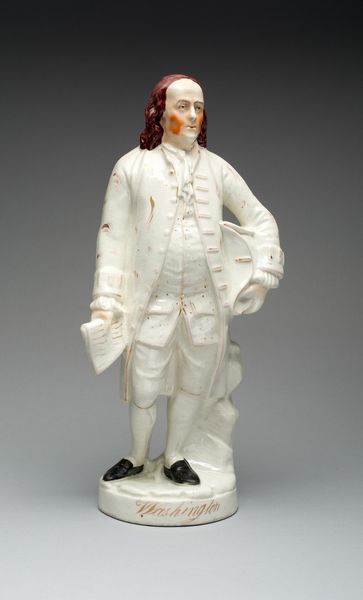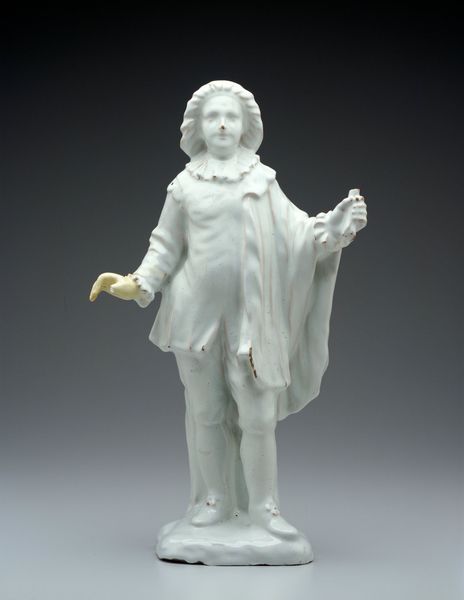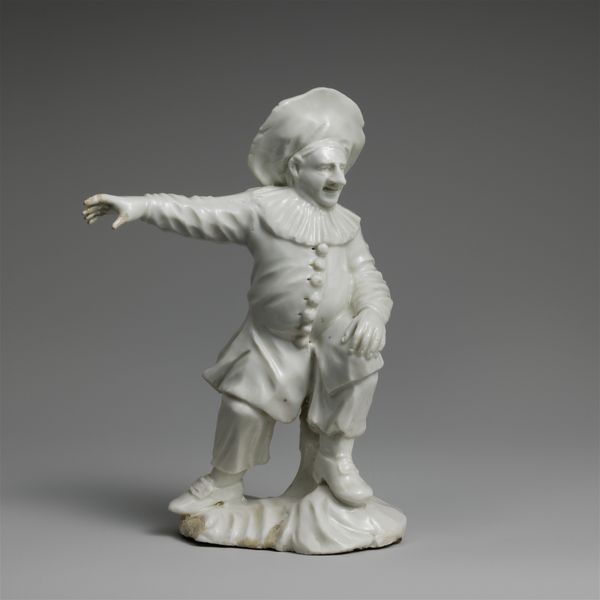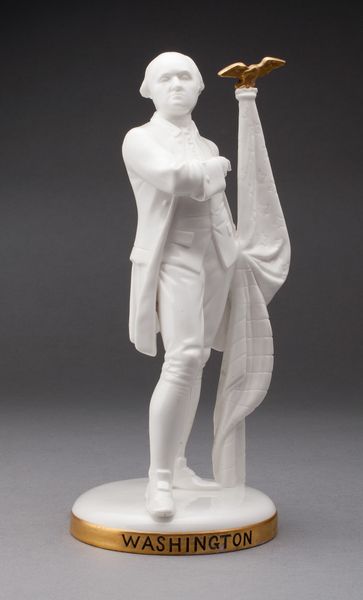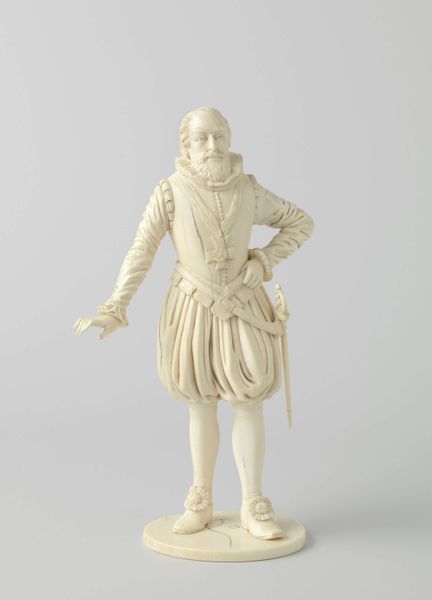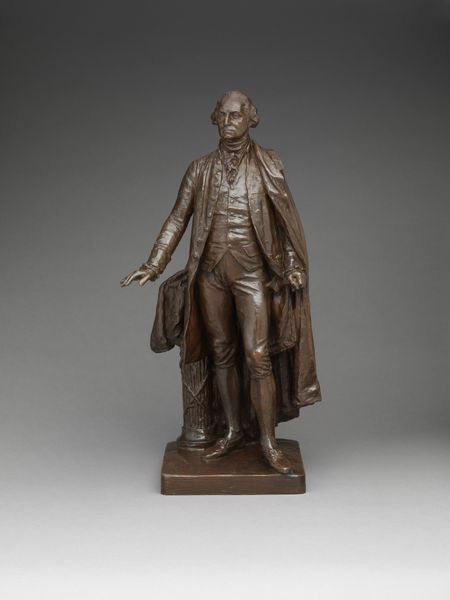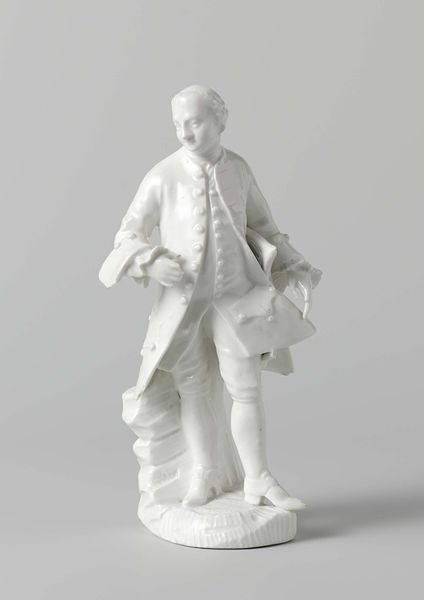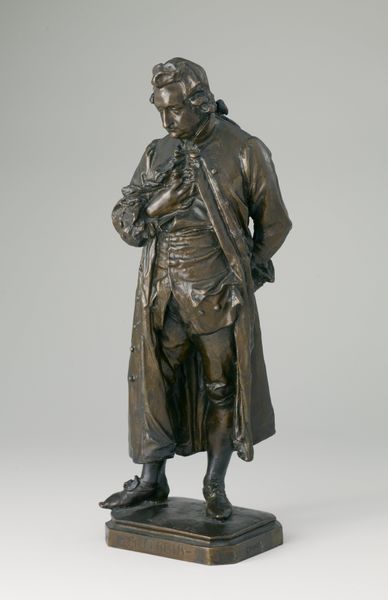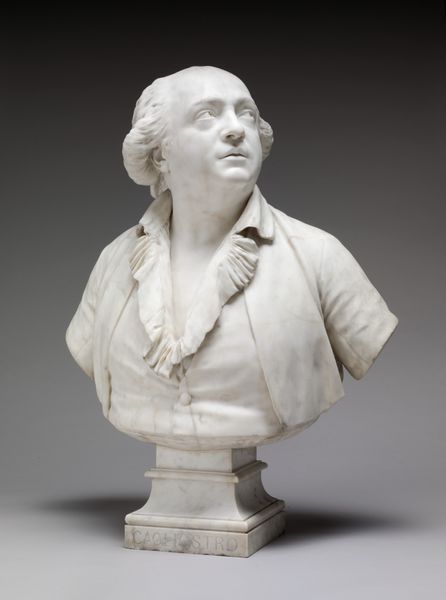
ceramic, porcelain, sculpture
#
portrait
#
neoclassicism
#
sculpture
#
ceramic
#
porcelain
#
figuration
#
sculpture
#
men
#
genre-painting
#
decorative-art
Dimensions: Height: 14 1/4 in. (36.2 cm)
Copyright: Public Domain
Editor: We’re looking at “Lord Lyndhurst,” a porcelain sculpture made sometime between 1824 and 1835, probably by Samuel Alcock & Co. It’s surprisingly... stiff. The all-white ceramic and formal pose make it feel almost like a monument in miniature. What can you tell me about why someone would create something like this? Curator: It's intriguing how you observe the sculpture's stiffness. Consider the historical context. The early 19th century saw an increasing interest in celebrating public figures, and simultaneously in a shift from aristocratic patronage to a burgeoning middle-class market for art. How do you think the production of portraits in ceramics serves those forces? Editor: I guess making porcelain figures was a way to make portraits accessible to a wider audience beyond oil painting for the wealthy? But was it purely celebratory? Curator: Certainly. Although we tend to interpret portraiture in search of interiority or individual likeness today, early 19th-century portraits were, very explicitly, concerned with power, social status, and the perpetuation of a certain visual rhetoric of authority. Note the figure’s clothing: the judicial wig, the voluminous robes… They speak volumes about Lyndhurst’s profession and position. The neoclassical style also lends him an air of timeless authority, connecting him to the traditions of Roman jurisprudence. Does the crisp whiteness contribute, do you think? Editor: That makes sense! The whiteness now strikes me as a deliberate attempt at communicating purity and prestige. I hadn't thought of the Neoclassical link, either, but it’s clearly referencing something far grander than just one person. Curator: Precisely. What seems like stiffness to a modern viewer was once understood as dignity and self-control – highly prized social virtues. I believe, also, this type of objects demonstrates the shift in the society. Who could become a model to the public? Editor: I see what you mean! Thanks, now it seems much more than a stiff little figure.
Comments
No comments
Be the first to comment and join the conversation on the ultimate creative platform.

